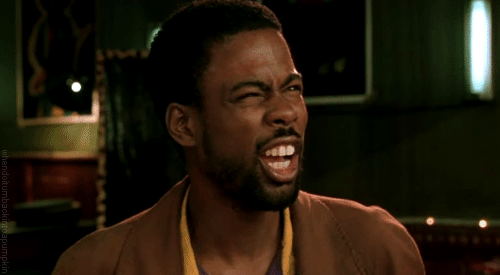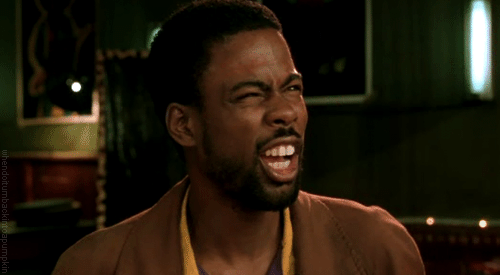
Wait. What The….

Courtesy of confessionsofasomedaysomebody.wordpress.com. I can admit that this is my face during some first reads.
Okay, let’s be honest: occasionally there are those times when reading someone’s work (classmate, colleague, or even student) where you find yourself wondering:
What the *bleep* am I reading?
If you have never thought this, then
- Stop reading now.
- I’m jealous of your patience. Seriously.
- And can you read
someall of my work? I’ll even share with you the scrappy beginnings of all of my half-hearted attempts.
But if you have, what do you do? When you have to Workshop someone’s piece that seems to make no sense, when you agree to read and edit the magnum opus of your math-loving friend who maybe can’t even write a complete sentence but recently decided they were born to be a writer, when it seems your student just basically threw words on the page without trying — what do you do?
For me, the simple answer is keep reading.
My personal reading/review method takes components from every type of Workshopping style I’ve learned to date, from my high school peer conferences to Professor Alexis Pride’s version of the Story Workshop Method to Professor Nami Mun’s take on the Close Reading Pedagogy.
I first sit down to a piece assuming that the writer knows what they are doing, even if I do not. This may be hard (especially when it’s the math-friend who may or may not even be seriously invested in this new endeavor). But, I also remind myself that the writer is looking for ways she can improve her piece (otherwise, why give it to someone?) and that writing, even if casually, does come with some weight. It takes time to churn out pages with even some semblance of a story and it takes real guts to her give those pages to someone else. I remind myself to take the piece seriously.
And then I prepare to read the work at least twice — sometimes more if necessary and reasonable — but preferably never in the same sitting.
During my first read, my focus is to note my initial reactions. I read like a reader but I also keep a pen with me. I write questions in the margins as they come, some plot-based: Is she ever going to find her mom? Others more technical: Why couldn’t I have known her sister was a ghost on page 2 instead of page 15? All this time, I thought she was a living, breathing mob boss. And others are notes that I hope to have answered by my second read: What in the world is happening here? Is she shooting someone or making love? or Because you’ve already let me know on page 5 that no one dies or gets hurt, I’m not really invested. maybe not enough tension in this scene.
I know this goes against a lot of Workshopping method pedagogy — many people prefer you not make any comments during that first read. But I think it’s unrealistic. We are constantly asking questions of published works, probably even more of work by published authors we’ve never read before. The only difference is, if I have too many questions and not enough answers or tension to keep me reading a published author I’ll put the book down (Freedom by Jonathan Franzen; The Road by Cormac McCarthy).

Courtesy of Readeroffictions.com – this was really my reaction to the first 50 pages of The Road this summer. I may try it again eventually buuuut….
With a piece-in-progress, though, I keep reading.
After my first read, I write a First Read response. This includes my truthful (though professionally worded) first reaction to the piece, glaring questions that weren’t adequately answered in what I’d read, my own interpretation of the story arc, elements of the story I enjoyed and sometimes my own private speculations of what’s to come (The sister‘s about to die, right? The man with the wooden leg’s going to come back and kill her?)
Then, I move on to something else. I come back to it later. This allows me enough time to return to the page with a different but fresh mindset. I’m now acquainted with the writer’s style and I also now what’s going to happen. If, after that first read, I sat back wondering What the *bleep* did I just read?, I begin again reading for clues. I am no longer reading like a reader. I’m reading like a writer, taking it slower, paying more attention to what is happening on the page (word choice, use of dialogue, time jumps, backstory, etc.) than to what is happening in the story (I’ve begun to notice that this actually helps me better understand what is happening in the story). This time all of my comments are geared toward unleashing what’s happening and explaining how I’m responding to what’s happening.
I also hope to answer or respond to most of my initial comment during this read (Oh, found out on last page that Renee was only pretending to be a ghost. I now see what you were doing in this part here). If, after reading it twice, I still don’t know what to say or think, I reread it again, this time using Nami’s close reading techniques, trying to find connections through related words and imagery. I then write another response explaining my new understanding of what’s happening.
Lastly, I talk with the author about it. Even if what I’m reading isn’t for a Workshop. I understand that my comments in the margin are not sufficient, that greater understanding comes through conversation. I use my comments and responses as talking points and try to make sure the writer understands my feedback.

Courtesy of Buzzfeed.com – yes my handwritings does sometimes look like this.
It does get tedious sometimes. But it’s important, as Nami advised during a Fiction II Workshop, to read optimistically. We are all trying to tell something. The purpose of a workshop isn’t to pass judgment on or discredit a work. We as readers should try to be a fresh set of eyes and honest perspective to our fellow writers. We should try to help them consider aspects of their piece that they may not have thought to consider otherwise.
Also, I try to give what I’d hope to get. I’d like to think that readers of my work are also reading to really understand and engage with what I’m trying to do. I tell myself that the people I share my work with are really invested in helping me produce my best work.
Because that’s what we’re here for, right?
[Blogger Note: The comment examples mentioned are not from an actual work – but don’t they make for a juicy story?]
